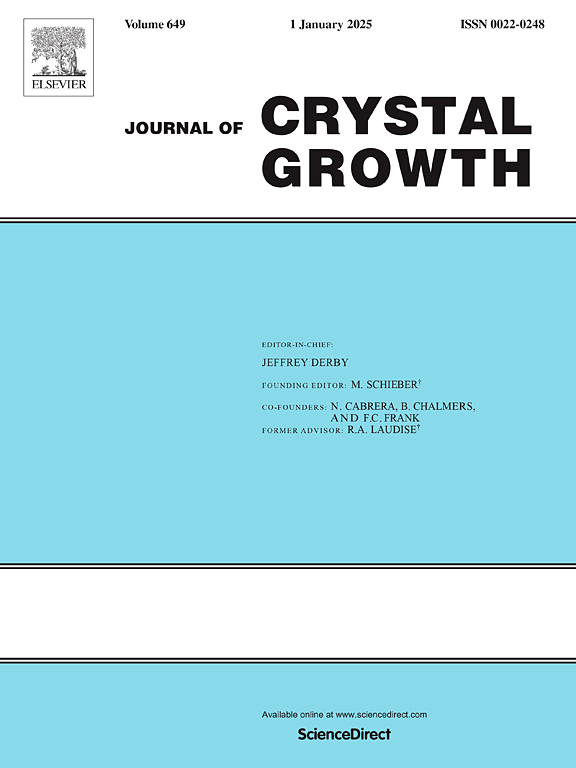Effects of synthesis methods on the structural and magnetic properties of Mg0.2Ni0.6Zn0.2Fe2O4 spinel ferrite
IF 1.7
4区 材料科学
Q3 CRYSTALLOGRAPHY
引用次数: 0
Abstract
Spinel ferrite nanoparticles (SFNPs), such as Mg0.2Ni0.6Zn0.2Fe2O4, have unique properties that are influenced by their synthesis methods. Different bottom-up approaches, including sol–gel, auto-combustion, hydrothermal, and co-precipitation method were used to prepare these nanoparticles. Structural, morphological, optical and magnetic properties were analysed using techniques like X-ray diffraction (XRD), Fourier transform infrared spectroscopy (FTIR), transmission electron microscope (TEM), scanning electron microscope (SEM) and vibrating sample magnetometer (VSM). Crystallite sizes measured using Scherrer’s formula were 28.9 nm, 20.2 nm, and 7.5 nm for the respective synthesis methods. FTIR spectra indicated metal–oxygen bond formation, TEM and SEM confirms cubical shaped morphology while VSM analysis revealed the pseudo-single domain nature of the synthesized SFNPs. The observed and estimated parameter strongly suggests that these materials could be used in biomedical and electronic applications.
合成方法对Mg0.2Ni0.6Zn0.2Fe2O4尖晶石铁氧体结构和磁性能的影响
尖晶石铁素体纳米粒子(SFNPs),如Mg0.2Ni0.6Zn0.2Fe2O4,具有独特的性能,其合成方法受其影响。采用溶胶-凝胶法、自燃法、水热法和共沉淀法等自下而上的方法制备纳米颗粒。利用x射线衍射(XRD)、傅里叶变换红外光谱(FTIR)、透射电子显微镜(TEM)、扫描电子显微镜(SEM)和振动样品磁强计(VSM)等技术分析了材料的结构、形态、光学和磁性能。采用Scherrer公式测定的晶体尺寸分别为28.9 nm、20.2 nm和7.5 nm。FTIR光谱表明合成的SFNPs形成了金属-氧键,TEM和SEM证实其呈立方体形态,而VSM分析显示合成的SFNPs具有伪单畴性质。观察和估计的参数强烈表明,这些材料可用于生物医学和电子应用。
本文章由计算机程序翻译,如有差异,请以英文原文为准。
求助全文
约1分钟内获得全文
求助全文
来源期刊

Journal of Crystal Growth
化学-晶体学
CiteScore
3.60
自引率
11.10%
发文量
373
审稿时长
65 days
期刊介绍:
The journal offers a common reference and publication source for workers engaged in research on the experimental and theoretical aspects of crystal growth and its applications, e.g. in devices. Experimental and theoretical contributions are published in the following fields: theory of nucleation and growth, molecular kinetics and transport phenomena, crystallization in viscous media such as polymers and glasses; crystal growth of metals, minerals, semiconductors, superconductors, magnetics, inorganic, organic and biological substances in bulk or as thin films; molecular beam epitaxy, chemical vapor deposition, growth of III-V and II-VI and other semiconductors; characterization of single crystals by physical and chemical methods; apparatus, instrumentation and techniques for crystal growth, and purification methods; multilayer heterostructures and their characterisation with an emphasis on crystal growth and epitaxial aspects of electronic materials. A special feature of the journal is the periodic inclusion of proceedings of symposia and conferences on relevant aspects of crystal growth.
 求助内容:
求助内容: 应助结果提醒方式:
应助结果提醒方式:


